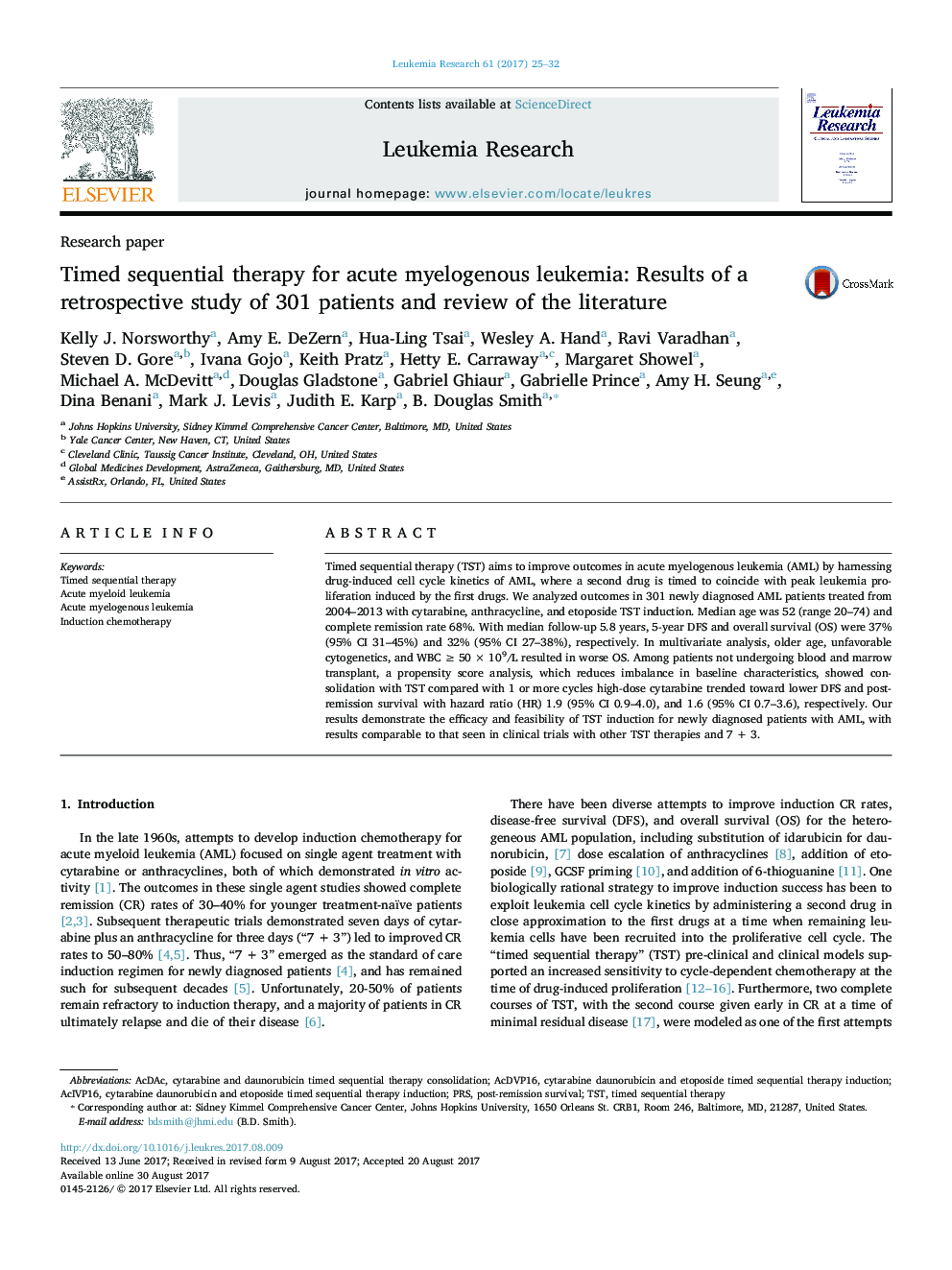| Article ID | Journal | Published Year | Pages | File Type |
|---|---|---|---|---|
| 5527761 | Leukemia Research | 2017 | 8 Pages |
â¢Timed sequential therapy (TST) times a second drug with peak leukemia proliferationâ¢TST induction results were analyzed in 301 patients with newly diagnosed AMLâ¢Results with TST in a non-clinical trial population resulted in favorable outcomes
Timed sequential therapy (TST) aims to improve outcomes in acute myelogenous leukemia (AML) by harnessing drug-induced cell cycle kinetics of AML, where a second drug is timed to coincide with peak leukemia proliferation induced by the first drugs. We analyzed outcomes in 301 newly diagnosed AML patients treated from 2004-2013 with cytarabine, anthracycline, and etoposide TST induction. Median age was 52 (range 20-74) and complete remission rate 68%. With median follow-up 5.8 years, 5-year DFS and overall survival (OS) were 37% (95% CI 31-45%) and 32% (95% CI 27-38%), respectively. In multivariate analysis, older age, unfavorable cytogenetics, and WBC â¥Â 50 Ã 109/L resulted in worse OS. Among patients not undergoing blood and marrow transplant, a propensity score analysis, which reduces imbalance in baseline characteristics, showed consolidation with TST compared with 1 or more cycles high-dose cytarabine trended toward lower DFS and post-remission survival with hazard ratio (HR) 1.9 (95% CI 0.9-4.0), and 1.6 (95% CI 0.7-3.6), respectively. Our results demonstrate the efficacy and feasibility of TST induction for newly diagnosed patients with AML, with results comparable to that seen in clinical trials with other TST therapies and 7 + 3.
